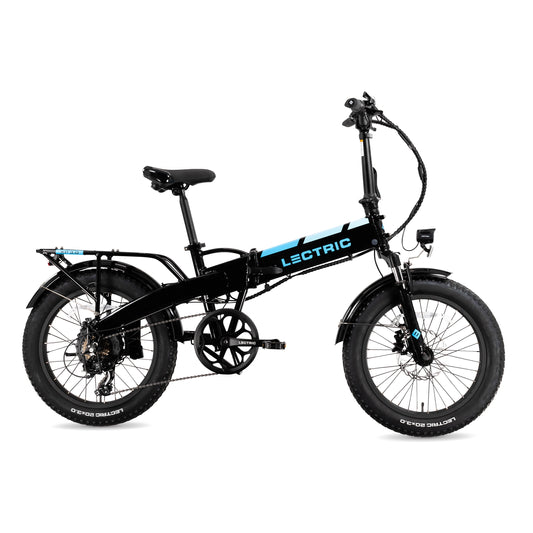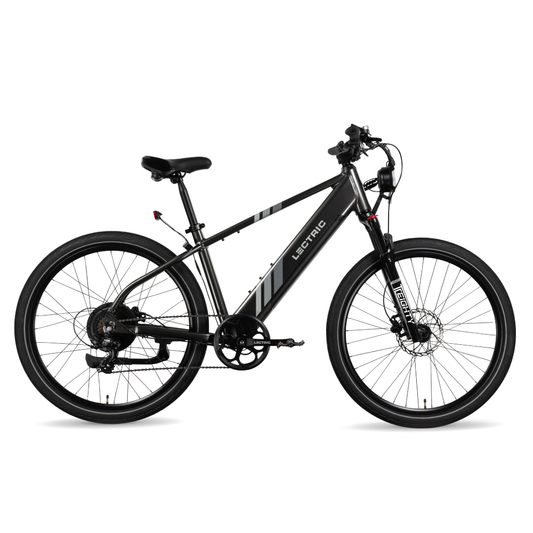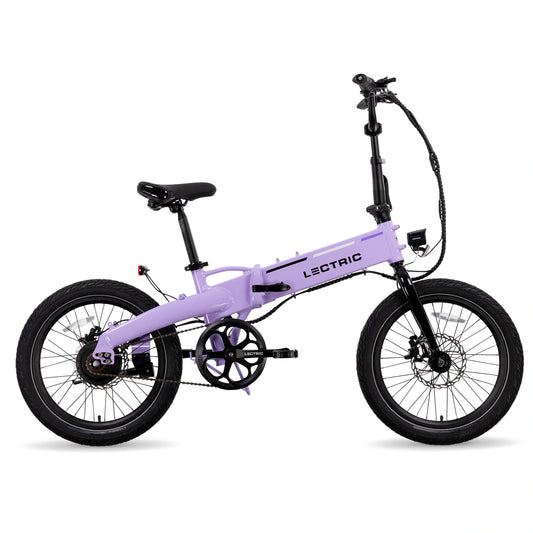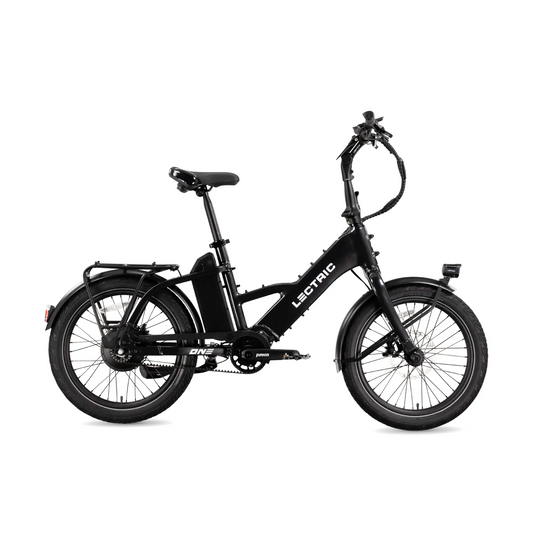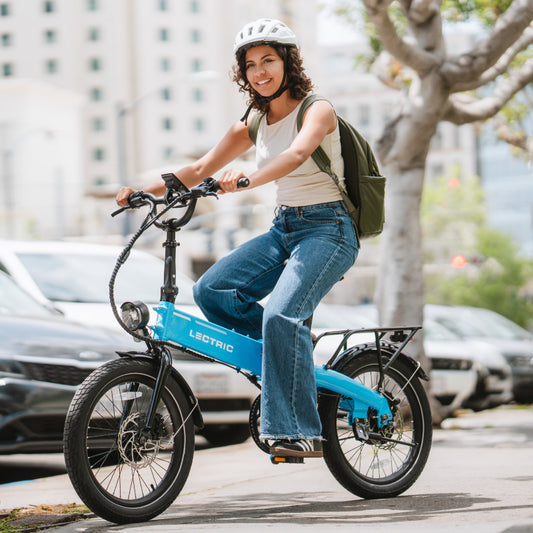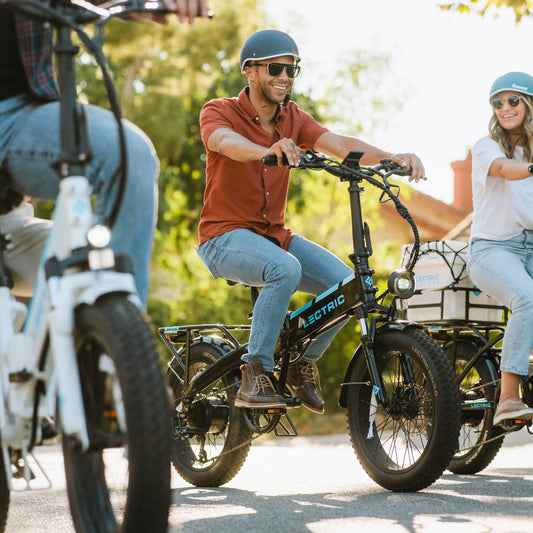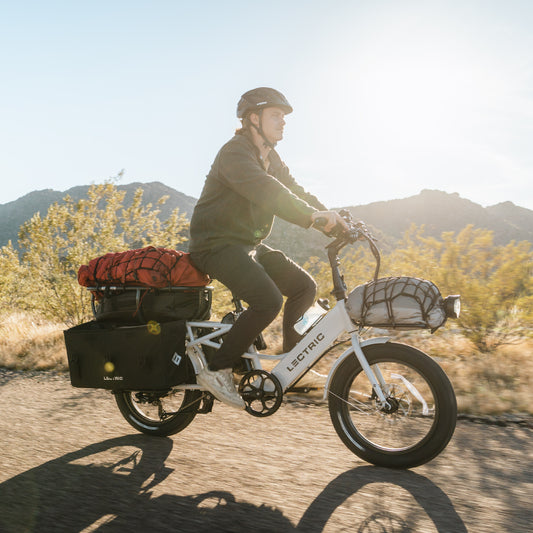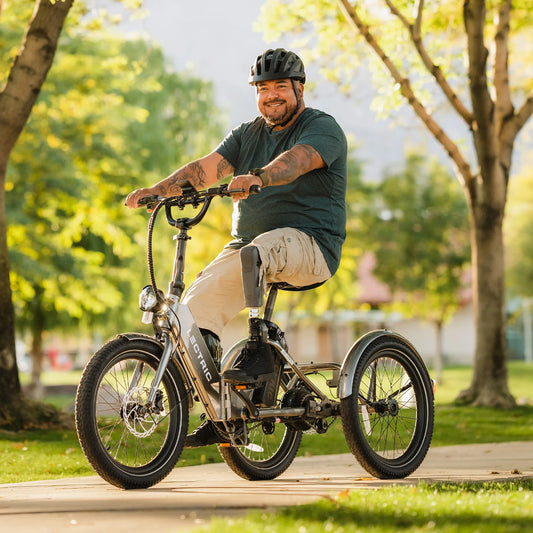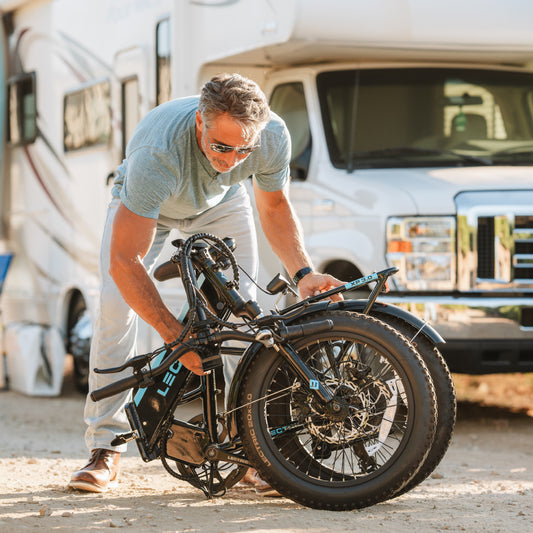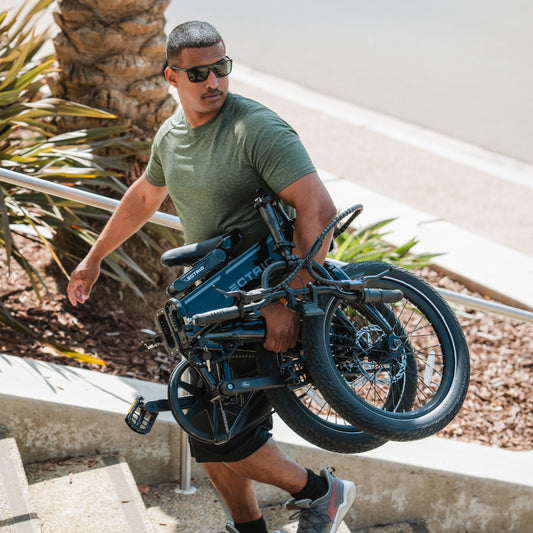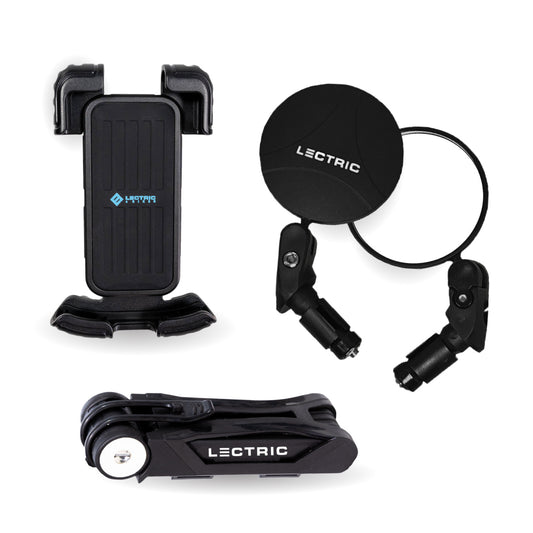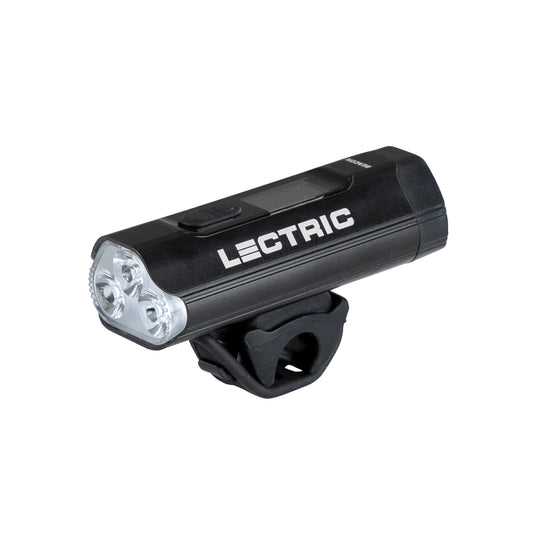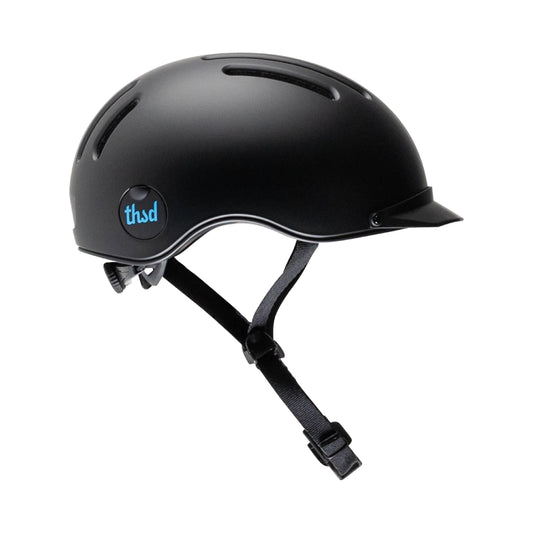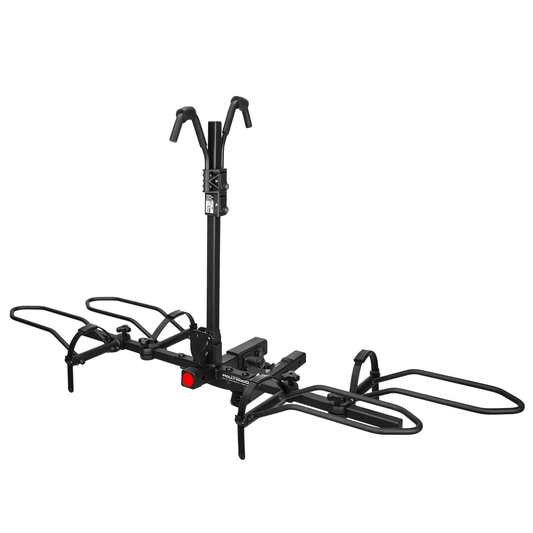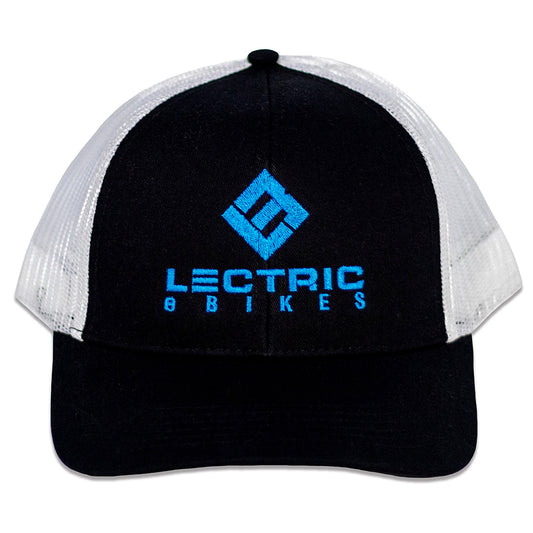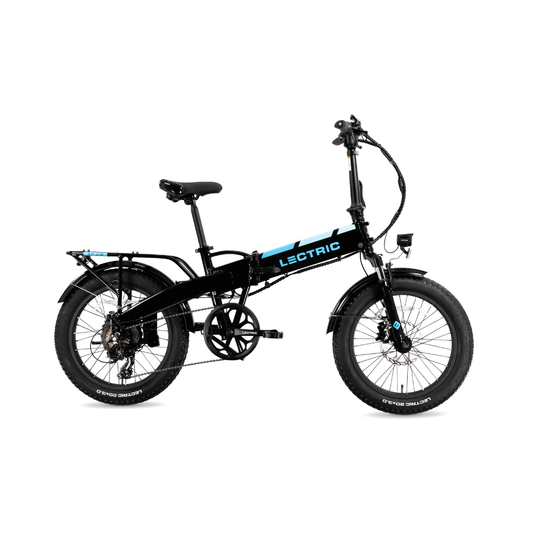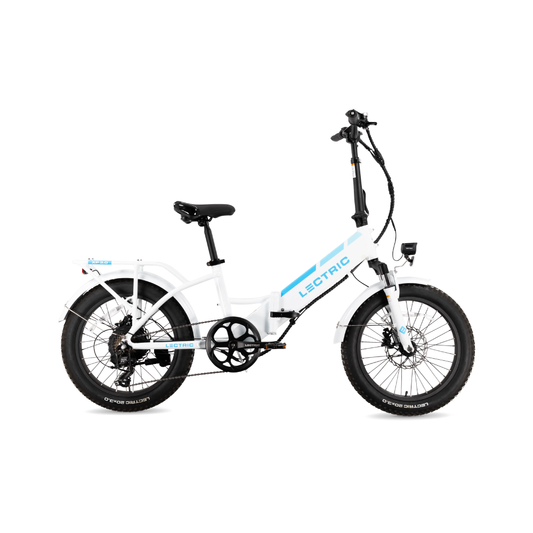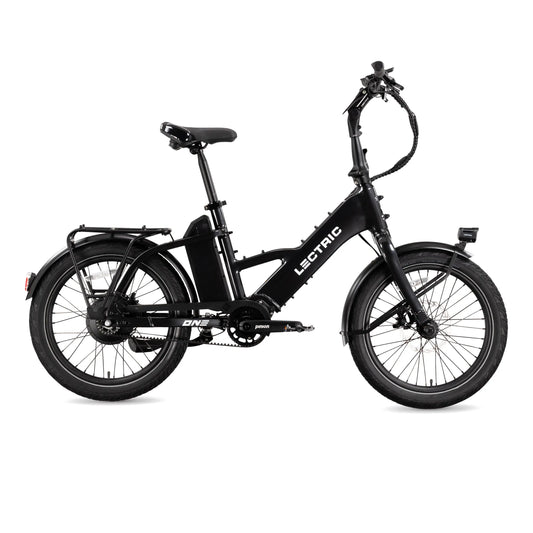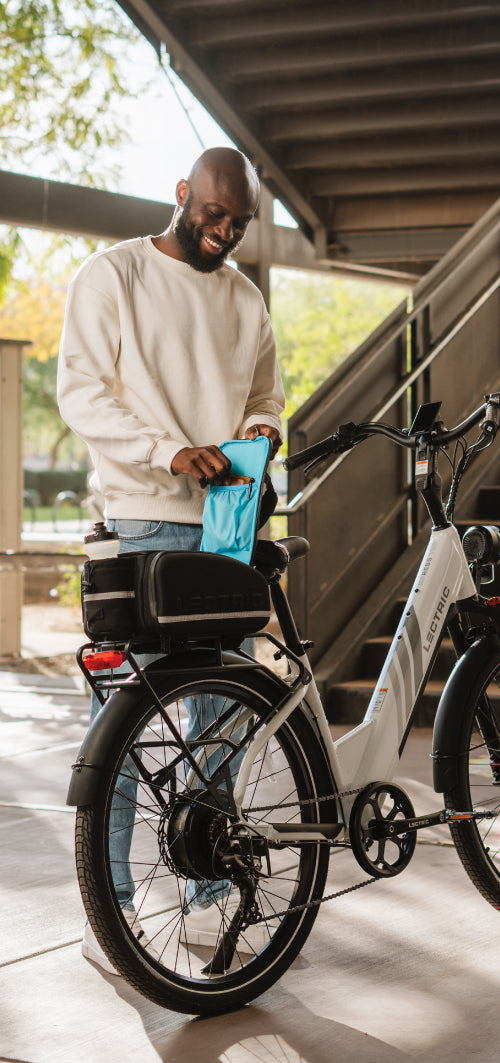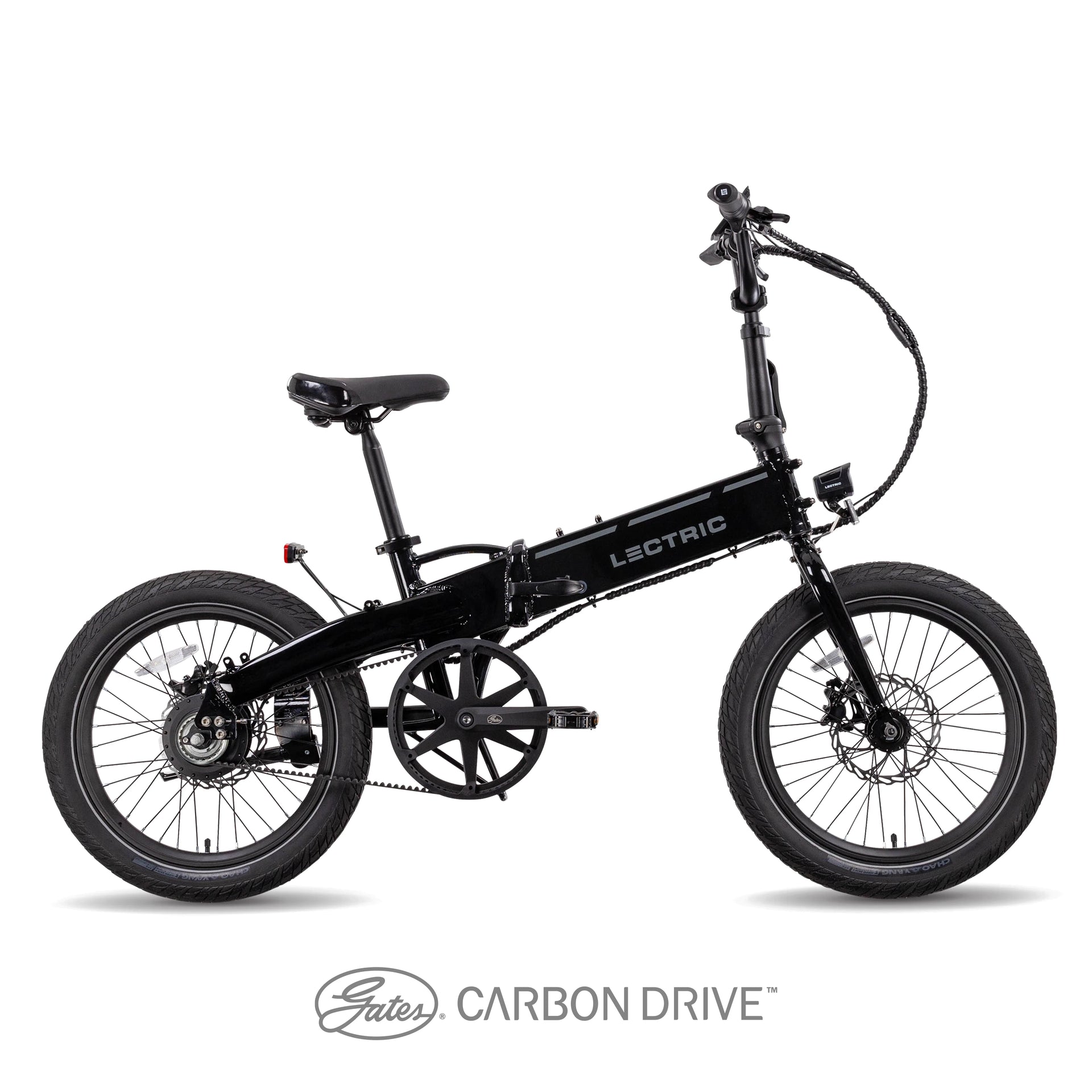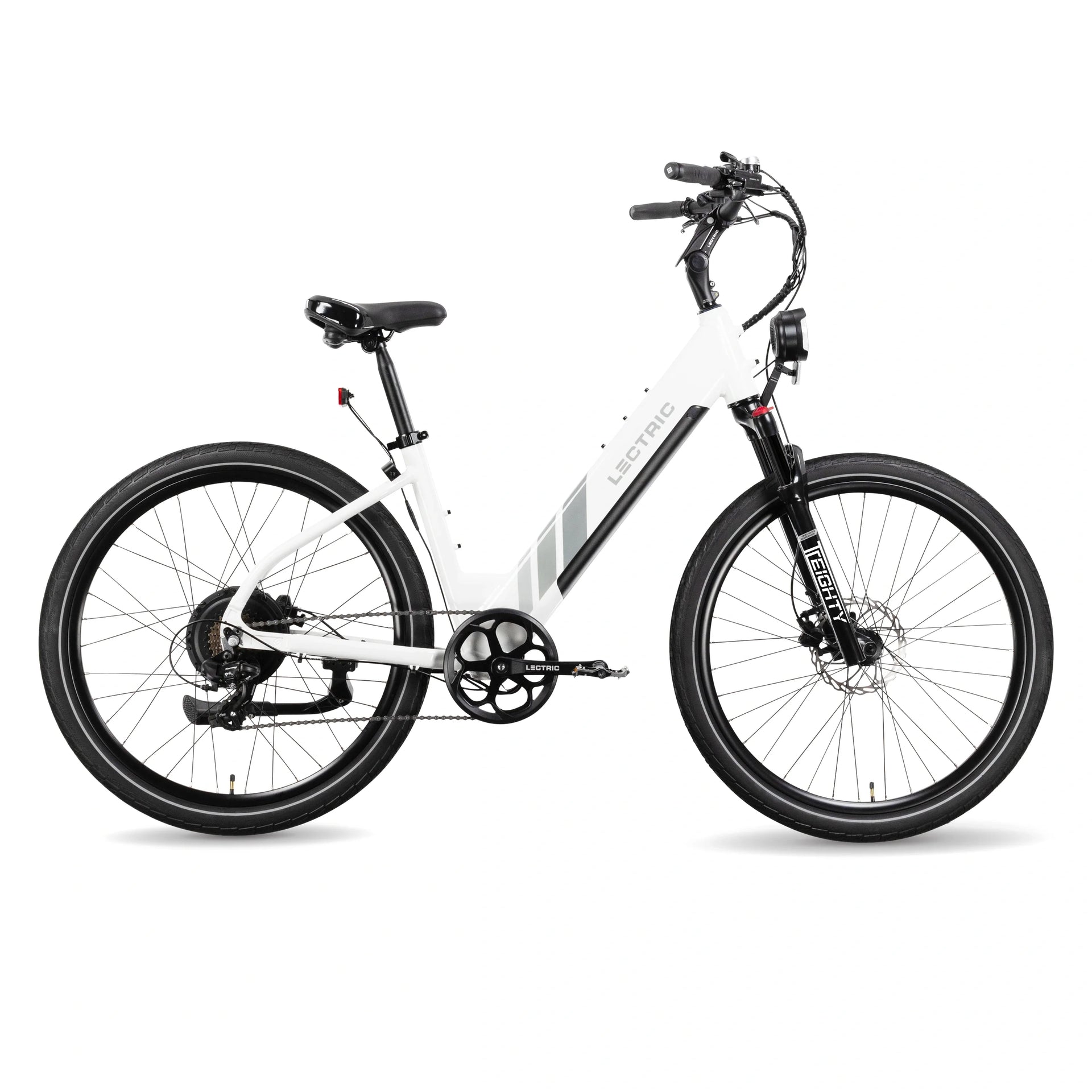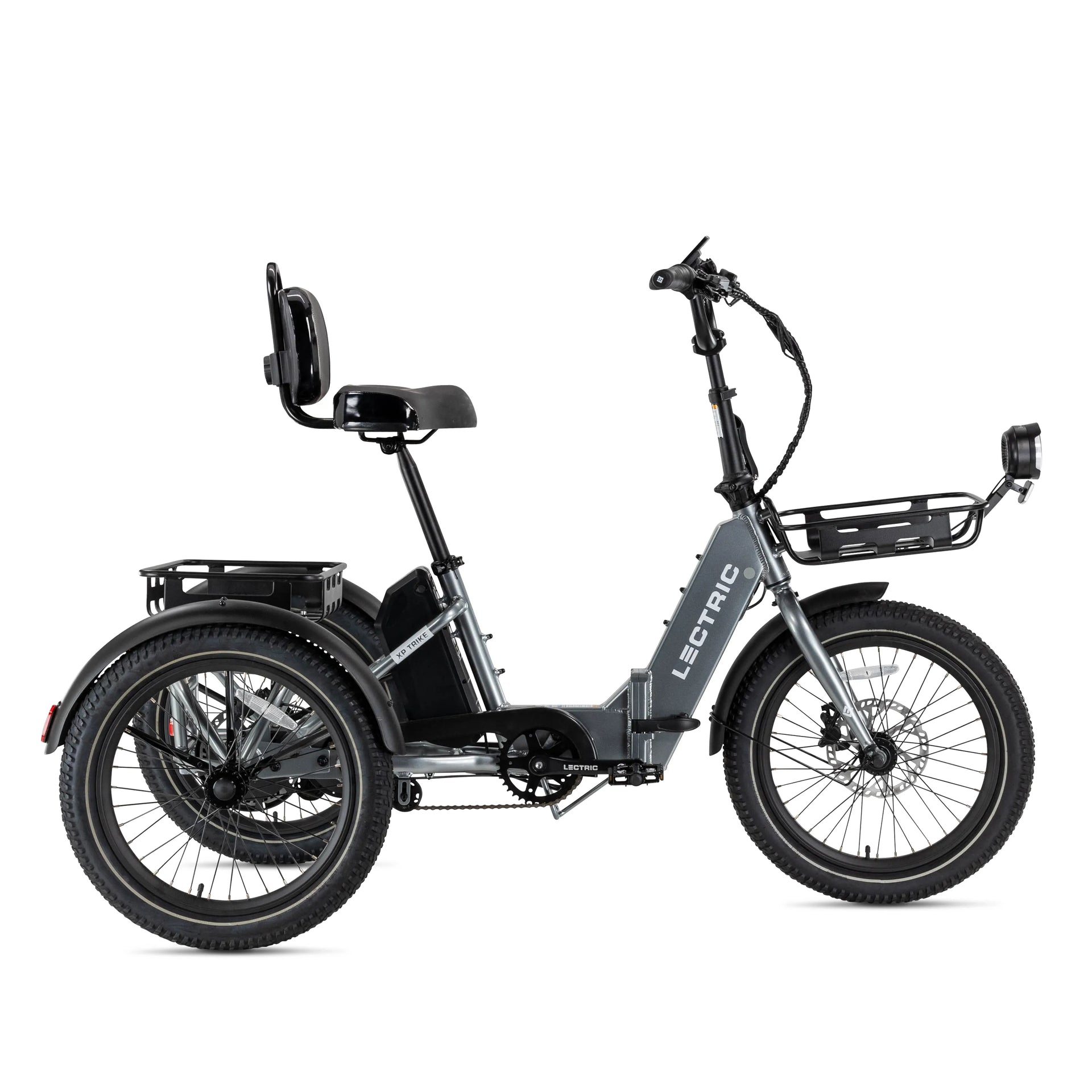Electric bikes, or eBikes, have revolutionized the urban commute and recreational cycling. With eBikes becoming more and more popular, it’s important to familiarize yourself with them. Whether you are a seasoned rider, or a newcomer to the biking scene, this blog seeks to break down and explain the things that put the “e” in eBikes!
Frame: The Bones of your eBike
Undeniably the most important part of any bicycle, the frame is the foundation of your eBike. It acts as a skeleton, housing all the components and parts that make your eBike an eBike. Frames can be composed of a variety of different materials and can vary in size, weight, and shape! All Lectric eBike frames are constructed of 6061 aluminum, a commonly used alloy which is light-weight and provides excellent resistance to corrosion.

(XP Lite 2.0 frame)
The size of your frame is just as important as what it is made of, with options of small, medium, and large, you might think you are clothes shopping! Finding the right fitting frame will make your miles in the saddle much more comfortable as you won’t be too overstretched or too compressed when pedaling. At Lectric we take a one size-fits-most approach; all of our models feature an adjustable seatpost which can be moved up and down to accommodate riders of different heights. We list the recommended height range by model; for example, the height range on one of our most popular eBikes, the XP 3.0, fits a range of riders from 5' - 6’4”.

Motor: Let’s Keep Movin’
The motor is one of the most vital parts of any eBike and along with your own pedaling power, is responsible for driving you forward. The motor provides you with pedal-assist and throttle functions -- the fun parts of eBiking! eBike motors generate the power to move your eBike forward, and that power is measured by metrics such as Wattage (W) and torque (Nm). The two main types of motors found on most eBikes are mid-drive and hub-drive. Mid-drive motors usually are located where the cranks sit and pull the chain forward, simulating the exact same motion you would do with your legs by pedaling! Mid-drives are often equipped with torque sensors that measure the foot torque of a rider in Newton-Metres. This means that when you pedal harder, the motor responds and provides more power. You can find a torque sensor on our XPress! Hub-drive motors are usually located in the rear wheel of your eBike. They provide power through a series of planetary gears enclosed at the hub. This action causes the motor to rotate around the axle, which rotates the wheel! All Lectric eBikes come equipped with rear hub-drive motors and vary in wattage.

When looking for an eBike you may see two different numbers listed for wattage on an electric motor; one value called “peak” wattage, and the other called “nominal” wattage. The difference between these two is easy to understand. Peak wattage is the maximum amount of power the motor can draw over a short period of time, sometimes referred to as “surge wattage.” Nominal wattage is your average operating power pull, which is usually the number listed on eBikes descriptions.

All of our eBikes, besides our XP Lite 2.0, feature a motor of at least 500W nominal, while eBikes like our XPedition, XPeak, ONE, and XPress 750 feature a bigger 750W nominal motor, with our most powerful motors peaking at 1310W!
Battery: Power Your Pedals
The battery provides the energy needed to power all the electrical components on your eBike; without one you simply have just a bike! It provides power to things like your motor, display, and controller. Think of it like the gas tank on your car.

(Battery inside of XP Lite 2.0)

Most eBike batteries are made of lithium-ion cells and are often measured in ampere-hours (Ah) which gives the rider a general idea of the range they might see when riding their eBike; usually more ampere-hours = more miles. Lectric eBikes offer batteries that go up to 14 Ah and provide the rider with a little extra juice to go further. Our Dual-Battery XPedition can rock 28 Ah of battery power and can go up to 120 miles under a single charge!
Controller: The Brains of the Operation
Controllers are exactly what they sound like, they control and direct the electricity flowing through your eBike, kind of like the brains of your eBike. It acts as the middleman between the battery and all other systems, telling the battery to direct power to different systems like your motor or display.
Display & Controls: How do you Work This Thing?
Normally located up on your handlebars, your display and controls allow you to operate and know what is going on with your eBike.
The display gives you a quick and easy way to keep track of things like your speed, battery life, mileage, and pedal-assist level. Every Lectric eBike comes with a clear, easily readable display which shows all the things above, some even come in full color!
Your controls are often located near the display; this is how you actually set things like your pedal-assist level, or turn your eBike on and off.

(Display and Control Pad)
Brakes: These Slow you Down
Now, we’ve covered most of the things that move your eBike forward, but we cannot skip over the things that stop your ride! An extremely important part of any moving vehicle is the brake system. In the world of eBikes there are a few different types of brake systems utilized, the main ones you will see are mechanical or hydraulic. The main difference between these are how the brake caliper is actuated. All Lectric eBikes come with premium hydraulic brake systems.

(Hydraulic Disc Brake)
Mechanical disc brakes function by running a metal cable down from the brake levers to the brake caliper itself. When the brake lever is pulled back by the rider, tension is applied to the metal wire which in turns causes the caliper to apply pressure to the brake rotor and stop the eBike. This provides good stopping power but can have its disadvantages. When using mechanical brakes, the rider provides direct input to the levers which control the calipers, meaning, however hard you pull is how hard you will stop (or don’t!). Overtime, as you use your brakes you will be stretching the metal cable which will require readjustment as it falls out of tolerance; not too big of a deal, but something to note for maintenance.
Hydraulic disc brakes do this same action while braking but do not utilize a metal wire to apply pressure to the caliper; instead they use hydraulic fluid! This provides a better user experience as you don't have to squeeze the brake levers down as hard while riding, and it leads to less maintenance overall as you do not have to worry about replacing a metal cable that eventually stretches and becomes malformed over time. One finger braking here we come!
Drivetrain: Chains, Belts, and Gears

(Chainring, Cranks, Freewheel & Chain)
The drivetrain includes the chain or belt, freewheel, crankset, and derailleur. These parts transfer your physical pedal power to the rear wheel causing it to spin and move forward, just like how an analog bicycle works! These components will wear and need to be adjusted or even replaced over time. Let’s take a look at each part individually:
- Chain/Belt: A vital part of the drivetrain, connected to the front chainring and running back to your freewheel, it is responsible for translating your physical pedal power to the rear wheel in order to get you moving. Chains usually consist of interconnected metal links and are designed to be strong and durable to stand up to the stretch and flex of pedaling and shifting gears. A belt is very similar to a traditional chain but is not interlinked, and instead is one solid-toothed carbon-reinforced loop that connects your front chainring to your freewheel in the back.
- Freewheel: The freewheel is a cluster of sprockets (gears) that are connected directly to the rear wheel. This allows a rider to shift their eBike chain to the different individual gears which affects your chain tension. Changing your chain tension changes how easy or difficult it is to pedal on different inclines or declines! Most of our eBikes offer a Shimano 7-speed shifter.
- Crankset: Often referred to as just the “cranks” it includes the crank arms and front chainring. The pedals are connected to the crank arms which is where your feet go! Pedaling and rotating the crank arms causes the chainring to rotate, which pulls the chain forward and turns the rear wheel.
- Derailleur: This piece is the mechanism that is responsible for moving the chain laterally across the freewheel sprockets in order to change gears. Analog bicycles you usually have two derailleurs, one in front at the chainring, and one in the rear at the freewheel. Derailleurs are a very complex portion of the drivetrain, consisting of pulleys, springs and a system of cables. While often very reliable, they do require adjustment over time. The Lectric ONE is equipped with a Pinion C1.6i, which is a completely sealed internal six-speed gearbox that is nearly maintenance free -- learn more about it here!
All of these individual pieces come together to form the drivetrain and keep you moving forward! Two of our models, the Lectric ONE, and JW Black XP Lite 2.0 feature a Gates Carbon Drive Belt instead of the traditional chain. This belt offers a substantial amount of benefits over a traditional chain including an increased lifespan, a quieter ride, and a close to maintenance-free riding experience as they are not prone to stretching or need oiling like a traditional metal bicycle chain does!
Suspension: Comfortable Cruisin’
To give you a smoother and more in control ride, a lot of eBikes will feature suspension systems. Suspension systems benefit your eBike by absorbing shocks and bumps in the road to give the rider a softer, more comfortable riding experience. Here at Lectric, we have a number of models that feature front fork suspension. Our XPress is equipped with a premium TC•Eighty suspension system to smooth out your next adventure!
Wheels & Tires: Big Wheels Keep on Turnin’
The wheel is considered one of the most important inventions in human history, right behind sliced bread and eBikes of course. Wheels, sometimes referred to as rims, provide a rigid metal frame for a tire to stretch around. The tire makes contact with the riding surface to provide traction. Tire surfaces often have a variety of different tread patterns (the knobby bits sticking out of the tire) which can provide different benefits depending on where you plan to ride!

(XP Lite 2.0 Front Tire)
Tires that feature a smooth tread with no protruding knobs are often called street tires. You can find street tires on models like our XP Lite 2.0 or ONE! As this name suggests, street tires perform extremely well on paved surfaces. Tires with a more aggressive “bumpy” tread are more commonly used for riding in rougher terrain or for off-road use as they provide more grip while riding.
eBike Classification: Class is in session!
When looking for an eBike it's difficult to know what might be best for you. To help with this, eBikes are categorized by speeds and motor functions falling into divisions known as “classes.” The classes are broken down like this:
- Class 1: eBikes in this class top out at 20 MPH and the electric motor only fires when the rider is pedaling (no throttle). Generally these can be ridden where normal analog bicycles are permitted unless posted.
- Class 2: These eBikes have a top speed of 20 MPH, and are also equipped with a throttle allowing the motor to turn without pedaling. These usually can go the same places a class 1 eBike can go.
- Class 3: eBikes in class 3 are capable of reaching a top speed of 28 MPH, and may or may not have a throttle.
Our XP Lite 2.0 and XP Trike are class 1 and 2 eBikes, topping out at 20 MPH and 14 MPH respectively, and feature a throttle that can be toggled on or off! All of our other eBikes are class 2 out of the box topping at 20 MPH with the throttle able to be turned off or on and can also be unlocked to go up to 28 MPH, class 3, if the rider chooses to do so! Check out this map below for a quick state-to-state reference. Make sure to always check your local laws before riding!

Conclusion
That’s pretty much all the parts that go into an eBike. From understanding different motor types to brake systems, having this knowledge gives you more tools to make an informed decision when it comes to finding the best eBike for you.
Still having some difficulty choosing? Take our eBike Quiz to help narrow down your options!

